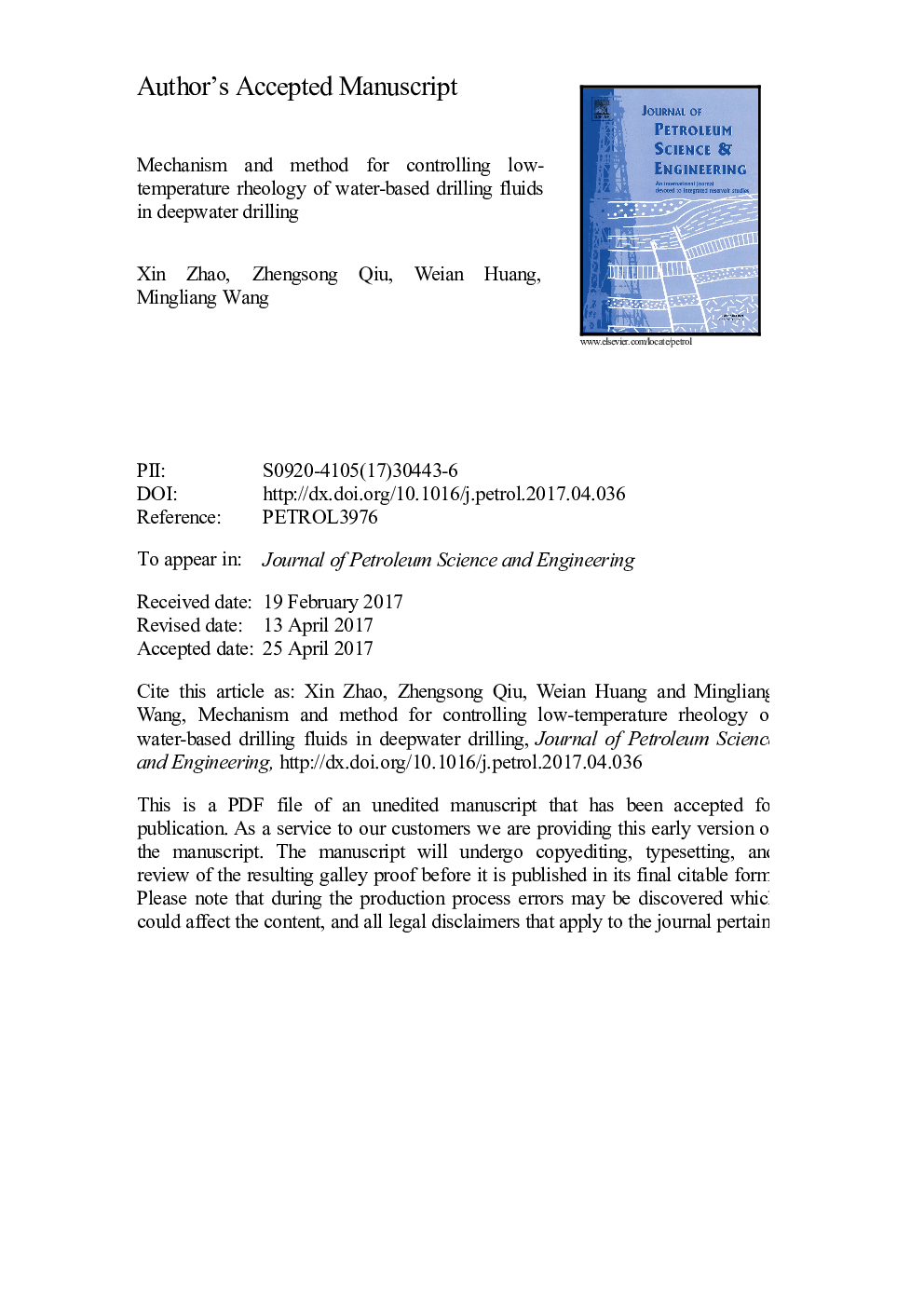| Article ID | Journal | Published Year | Pages | File Type |
|---|---|---|---|---|
| 5484223 | Journal of Petroleum Science and Engineering | 2017 | 50 Pages |
Abstract
In deepwater oil and gas drilling, water-based drilling fluids (WBDFs) apparently thicken at a low temperature (usually 4 °C), causing lost circulation, high flow resistance, and leakage of drilling fluid from the shaking screen. In this study, the rheological properties of aqueous suspensions containing different components were tested from 4 to 75 °C. Furthermore, the influencing mechanism of a low temperature on the rheology of WBDFs was comprehensively analyzed, and a basic method for controlling low-temperature rheology was proposed. The results showed that all the aqueous suspensions exhibited thickening at a low temperature. The thickening of WBDF at a low temperature could be attributed to the intrinsic feature of water, edge-to-edge and edge-to-face attraction bond structures formed by clay particles, and remarkable polymer molecular entanglement. The development of a rheology modifier that increases the rheology at a high temperature while does not work at a low temperature, optimization of the solid components including bentonites and weight materials, rational design of the molecular structure of polymers, and selection of the additives that do not cause remarkable thickening can help to control the low-temperature rheology of WBDF. Based on this method, a thermosensitive copolymer rheological modifier and a low-molecular-weight coating agent were developed, and two high performance WBDFs were optimized. Their rheological properties were found to be more stable than those of the three typical WBDFs over a wide temperature range from 4 to 75 °C. Therefore, the rheology control method proposed in this study can help to design a WBDF with good low-temperature rheology.
Keywords
Related Topics
Physical Sciences and Engineering
Earth and Planetary Sciences
Economic Geology
Authors
Xin Zhao, Zhengsong Qiu, Weian Huang, Mingliang Wang,
